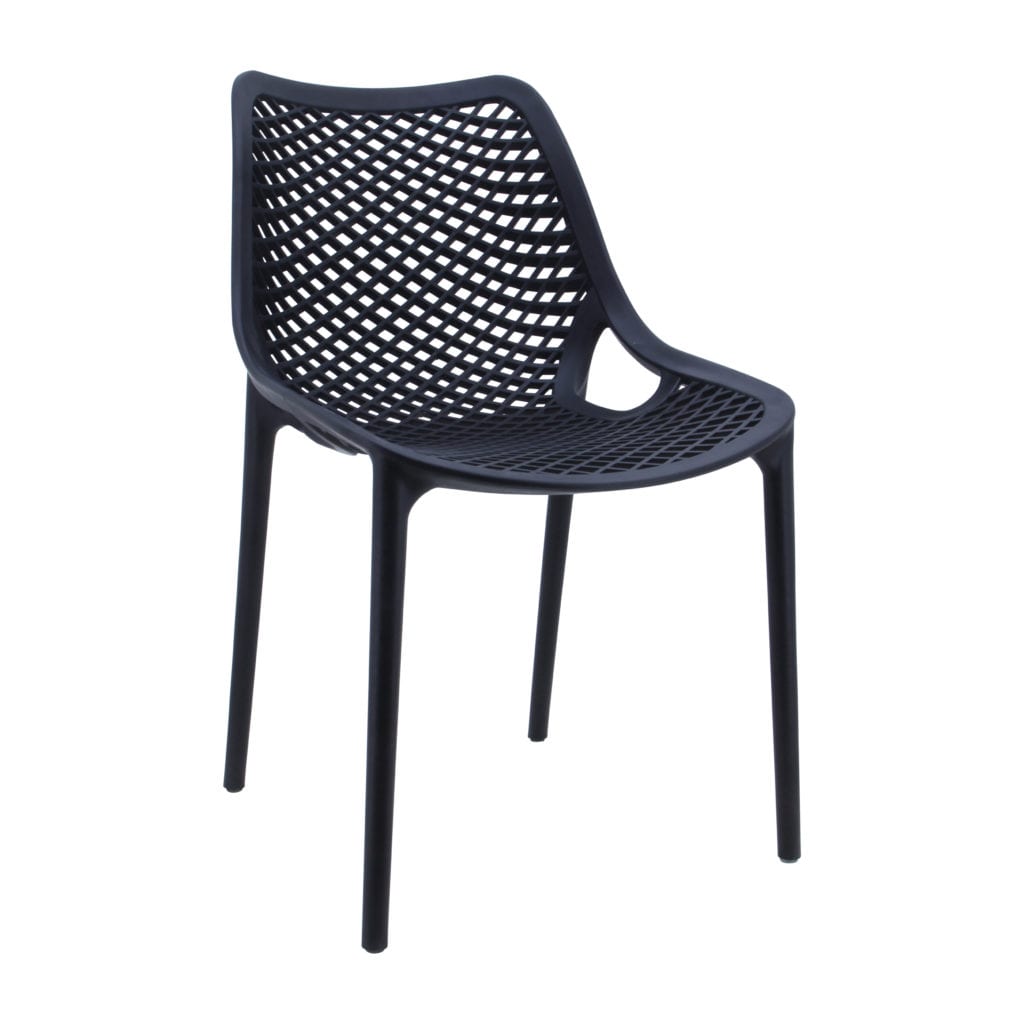Air Chair – 2020’s Must-Have Cafe Chair
Fashions come and go and that is particularly the case with furniture. Prior to the 1960s, furniture was mostly made from wood and was bulky and clumsy.

Fashions come and go and that is particularly the case with furniture. Prior to the 1960s, furniture was mostly made from wood and was bulky and clumsy.
However, in 1963, Robin Day, a young British designer, invented the world’s first mass-produced injection moulded polypropylene chair which was recognised as a major breakthrough both in technology and furniture design. Designed to be stacked, it was cheap to produce and cheap to buy, and quickly became the modern-day chair for the masses.
Known as the poly-prop chair, it had a plastic shell and chrome legs and was lightweight and easy to move around. Because of this, it opened up a realm of possibilities and very soon the chairs made their way into hospitals, airports, sports stadiums, offices and schools. In 1965 a new kid hit the block - a poly-prop chair which was made totally from plastic.
During the 1970s and 80s, the world went crazy for these simplistic plastic chairs. France and the USA were two of the biggest producing countries, and in one factory, it was reported that a chair was produced every 70 seconds.
Unfortunately, sales of the plastic chair went into decline in the 1990s, as composites such as aluminium came to the fore. Also, with computers being introduced into offices, the focus was on ergonomically designed furniture made from natural materials which were more comfortable for employees spending hours sitting at their desks behind a computer screen.
In the 21st century, however, furniture trends changed once more as designers began to experiment with plastic and pushed the boundaries of design. One particularly memorable chair was Philippe Starck’s ‘Masters’ chair which cleverly layered the shapes of 3 classic chairs designed by masters in their field - the ‘Eiffel Chair’ by Charles Eames, the ‘7 series’ by Arne Jacobsen, and the ‘Tulip Armchair’ by Eero Saarinen. All 3 styles can be seen 3-dimensionally in the backrest.
Nowadays polypropylene chairs are widely embraced by cafes and bistros looking to capitalise on outdoor space to drive sales. Robust and colourful, and available in a huge variety of styles, plastic chairs are ideal for creating colourful, and relaxing dining spaces. Ideal for the harsh Australian climate, they’re strong and can stand up to forces being applied without breaking, bending, or shattering in any way.
To prove a point, an experiment was recently carried out by Brisbane-based Cafe Solutions, a leading commercial furniture retailer, to test the strength of their best-selling ‘Air Chair’ by dropping a 750kg Holden Colorado on to it.
Russell Crawford, MD of Cafe Solutions had this to say,
“ Customers often question the low price of our polypropylene chairs and how they can possibly be suitable for commercial use. This is why we decided to carry out a strength test to put an end to their doubts. We performed the test on a variety of different polypropylene chairs, and they all passed unscathed with flying colours!”
He went on to say
“Judging from the huge surge we’ve seen recently in sales of polypropylene chairs, cafe owners are coming to view them in a new light. Once regarded as ‘cheap’ substitutes for traditional timber furniture, they’re beginning to see the benefits of using modern plastics to create a relaxing, stylish and comfortable environment for their patrons which can be used all year round and doesn’t put a huge dent in their wallet.”
The Air Chair comes in a range of 7 gorgeous colours which will complement any décor. Water repellent and UV treated they can be used through all the seasons. Why not take a look for yourself Air Chair from Cafe Solutions

